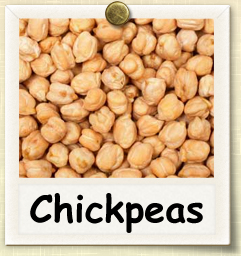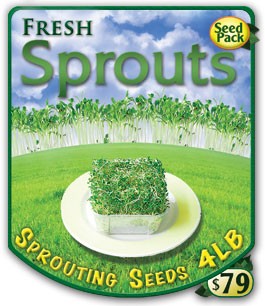|
Home > Guides > Sprouts > Legumes > Chickpea Seeds |
|
How to Sprout Chickpea Seeds | Guide to Sprouting Chickpea Seeds |
|
|
| |
 |
|
Overview |
|
|
|
|
|
| |
|
| |
Native to India, and popular in the cuisines of that region and the Mediterranean, chickpeas have found new applications in sprouting. This offers a relatively low energy way to enjoy the protein and other nutritional benefits of this large legume. Chickpeas can be enjoyed in raw humus, and is especially well-suited for processing to produce a thick paste that works well as a base for dips and similar creations. |
|
| |
|
|
| |
Growing Guide
GROWING NOTES
As with all sprouts, cleanliness is absolutely essential. While frequent rinsing is essential for growth and development, thorough rinsing is even more vital for safe, clean sprouts.
Procedure:
- To start your sprouts, you will want to soak your seeds in a bowl of cool water for 4-6 hours, or overnight, making certain that seeds are submersed and not floating on top of the water. This will soften the seed coat and promote germination. After soaking, thoroughly drain off all water. It is wise to rinse seeds immediately after soaking to clean them and wash away an extraneous matter, and again drain off all excess water.
- Wait several hours, then later in that day: Rinse seeds with cool, clean water. Carefully drain off all water so seeds at bottom of sprouter are not covered with water.
- Repeat this process of rinsing with cool water and draining 3-4 times per day as your seeds mature, and even as you begin to harvest and consume them. As your sprouts grow, it is important that they receive good air circulation. Many types of sprouters, such as simple canning jar types, provide good circulation with the tilting motion necessary for complete drainage. Keep your container on your kitchen table or counter, or similar location that has dependable lighting and airflow.
- Once sprouts have reached a desirable state for consumption, typically 2-4 days for chickpeas, they can be transferred out of sprouter and placed under refrigeration to prolong their lifespan. This is not necessary but will slow down the growth process and give you a larger window to eat your sprouts. Sprouts should not be allowed to dry out, as they can quickly lose their vitality and nutritional content.
- Clean sprouter thoroughly after use.
|
|
| |
|
|
|
| |
|
|

|
|